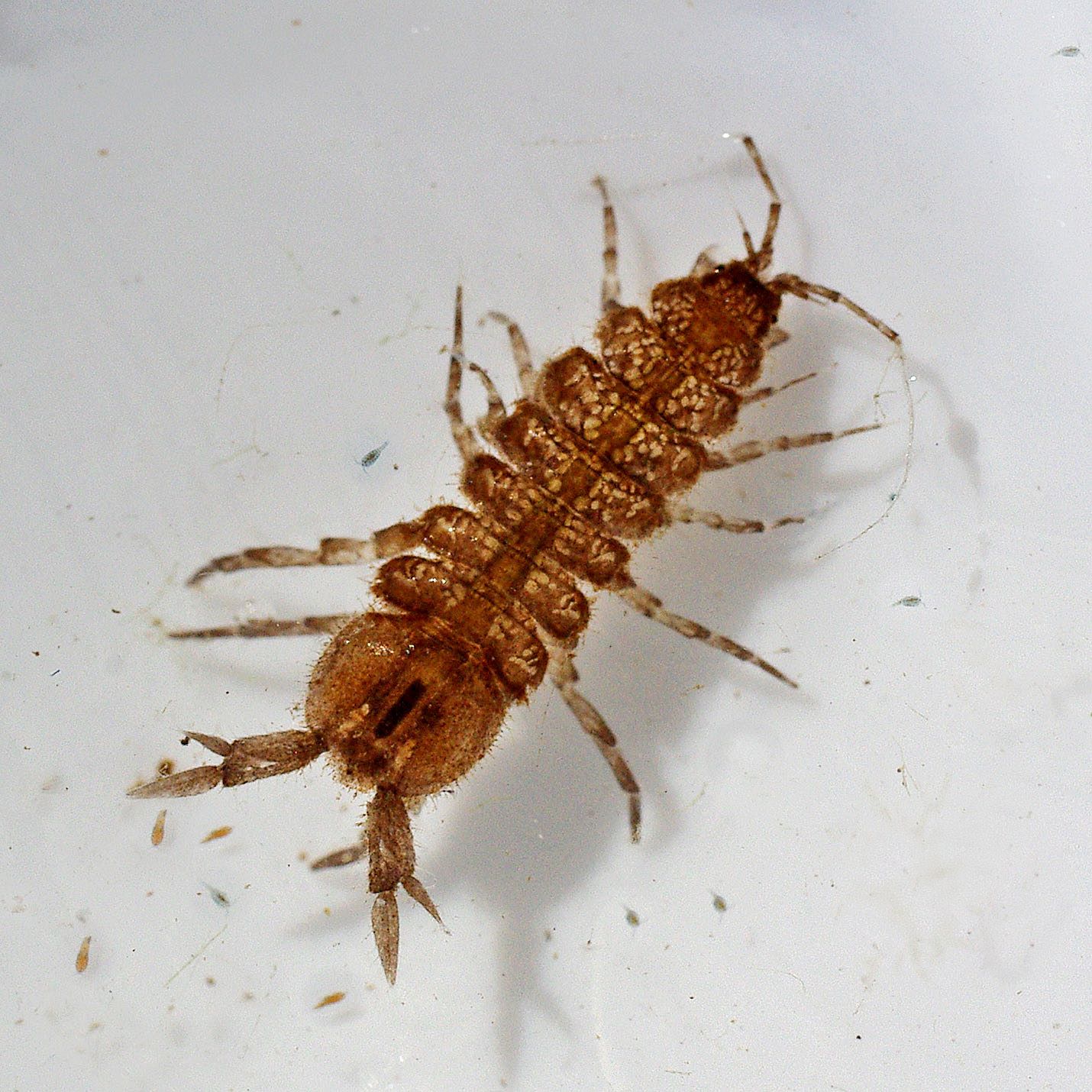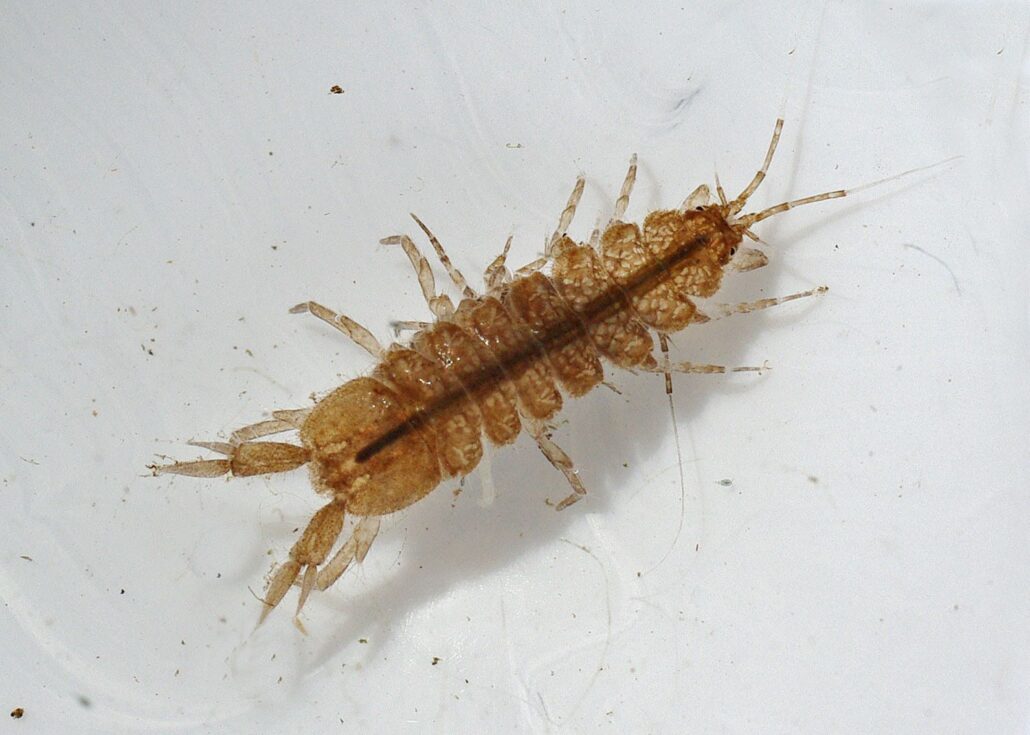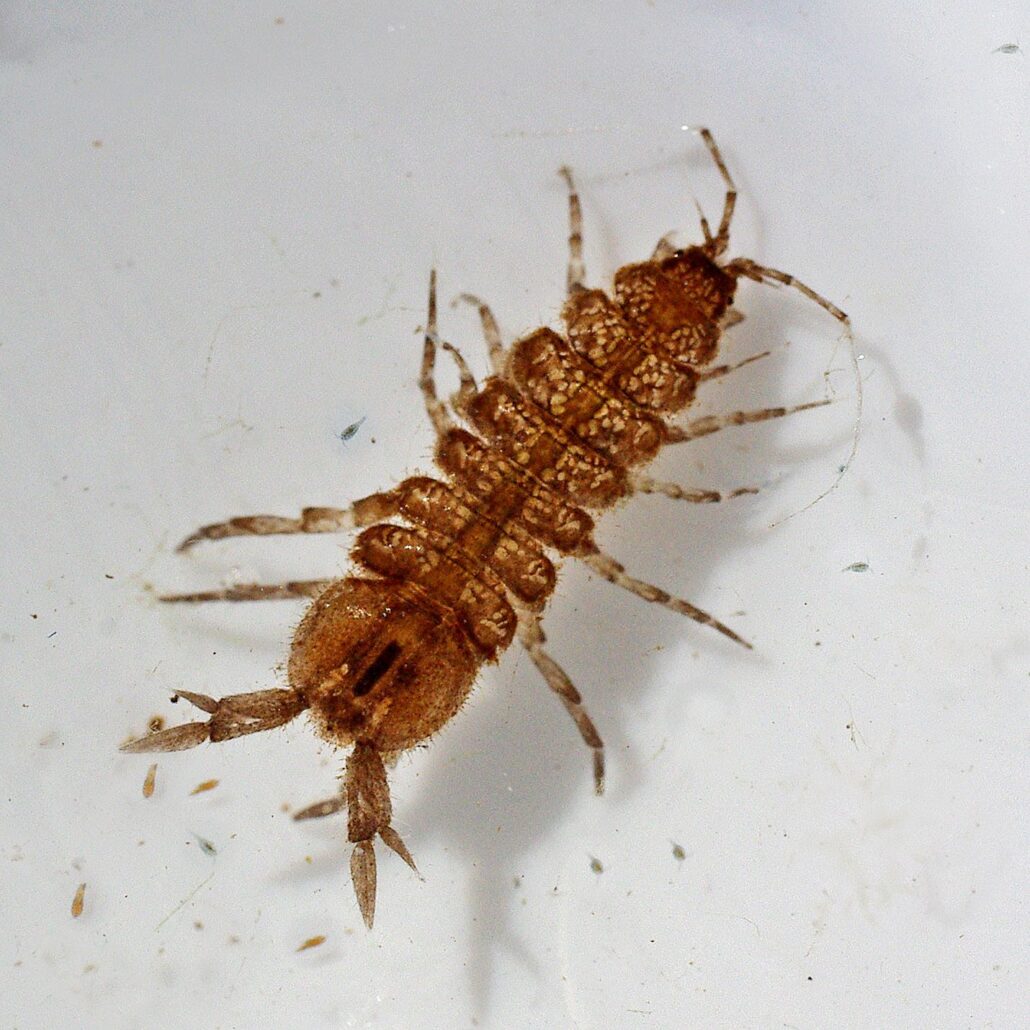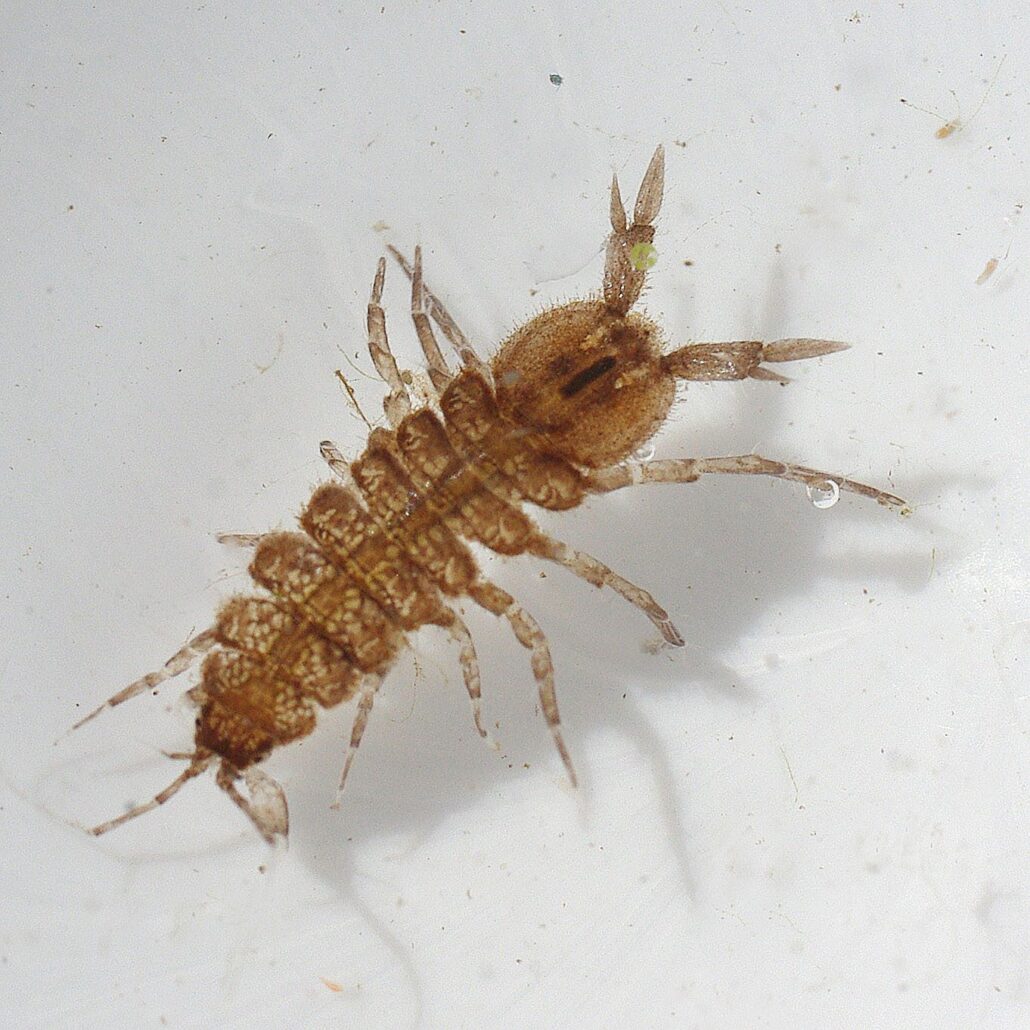
by Kate Redmond
Wetland Homage I Water Sow Bug
Howdy, BugFans,
May is American Wetlands Month. So, all month, BOTW will celebrate by posting slightly-massaged (a few new words and pictures), encore episodes about a selection of awesome critters the BugLady has encountered in area wetlands, plus some wetland information.
To start with – what exactly is a wetland? There are some pretty technical definitions out there that include wetland soil types and lengths of time that soils are submerged, but the US Geological Survey’s definition is more intuitive. Wetlands are transitional zones between well-drained upland areas and deep water systems. The water table in wetlands may be at or just below the surface of the land, or the soil may be covered by shallow water. Some wetlands are permanently wet; some are periodically dry; some are wet at high tide. The BugLady is reminded of a video she once saw of Canadian Naturalist John Acorn, wearing boots and standing in a squishy area, saying “Wet! Land! Wet! Land!” as he lifted and put down one foot and then the other.
WATER SOW BUG
This story about Water Sow bugs was first posted in 2009.



Another foray into the world of the “almost-insects.” Like insects, Water Sow Bugs are in the Phylum Arthropoda (“jointed appendages”), and like their terrestrial cousins the sow/pill/potato bugs of previous BOTW fame, they are in the very diverse subphylum Crustacea (with lobsters and crabs and barnacles and more) and in the mostly-aquatic Order Isopoda (equal foot), a reference to their abdominal appendages. They’re in the family Asellidae, the Common Waterslaters. The BugLady couldn’t find any explanation for “waterslater,” and when she looked up “slaters,” it was defined either as 1) “someone who lays slate” or 2) as a water sow bug. Maybe a reference to the overlapping segments of the exoskeleton? The water sow bugs she photographed might be in the genus Caecidota.
About the common name—they were named sow bugs because someone thought that the way the female cares for her young was reminiscent of sows caring for piglets. Other names for these critters are water louse, aquatic sowbug, water hoglouse, and cress bug.
They are flattened for crawling under stuff, drab in color, and about ½” long. They have three body segments—a cephalothorax (combined head and first segment of the thorax), a thorax (the next 7 segments) and an abdomen (everything south of that). Jointed appendages? They’ve got plenty. Water sow bugs have 7 pairs of legs, one per segment of the thorax. The first pair is adapted for holding; the rest of these boots are made for walking. To that, add 6 pairs of short appendages on the underside of the abdomen, the final pair of which looks like two tails. They breathe using gills located on the underside of the abdomen, and there are two pairs of antennae – one long and one short.
Look for Water sow bugs in shallow water under dead leaves and debris – the more hiding places there are, the more Water sow bugs there will be. One source calls them “secretive.” They are designed to survive in low-oxygen and they prefer the lighting to be low, too. Diet-wise, they are omnivore/scavenger/shredders that eat little pieces of detritus from the pond floor, bits of dead or injured animals, and live and decaying plants. In turn, fish and many other aquatic animals eat them.
On the underside of each of the segments of the thorax, at the base of each leg, is a short, inward projection; these combine to form a shallow chamber below the thorax. Female Water sow bugs use this thoracic chamber as a brood chamber or marsupium https://bugguide.net/node/view/1799296. She carries her eggs there, and later, for a little over a month until they can fend for themselves, her young. During that time, she fans the “plates” that form the marsupium so that the eggs/young are properly oxygenated. That maternal solicitation is negated by the fact that she will sometimes eat her own offspring, and that the siblings may cannibalize each other.
Wood frogs owe a lot to Water sow bugs. Water sow bugs help to turn big pieces of dead plants and animals into little ones in ephemeral ponds. In the process, dead material is removed from the pond, and smaller chunks of material can be colonized by fungi and algae more easily. These nutritionally-enhanced morsels of food are eaten by wood frog tadpoles and other herbivores.
Fun Fact about Water sow bugs: though they live underwater, they are poor swimmers, getting from Point A to Point B by crawling. Slowly.
Another Fun Fact about Water sow bugs: Old Wives say that if you have an upset stomach, you should eat a sowbug. Turns out that (like Tums) their exoskeletons are largely calcium carbonate.
And if the worst that can be said of any of us, after we pass, is that we maybe cared a little too much for watercress, then we will have lived pretty blameless lives, indeed.
Kate Redmond, The BugLady
(Sharp-eyed BugFans who are wondering about the tiny, elongated, shapes in one of the pictures – good spotting – those are Cyclops https://uwm.edu/field-station/cyclops/)
Bug of the Week archives:
http://uwm.edu/field-station/category/bug-of-the-week/
